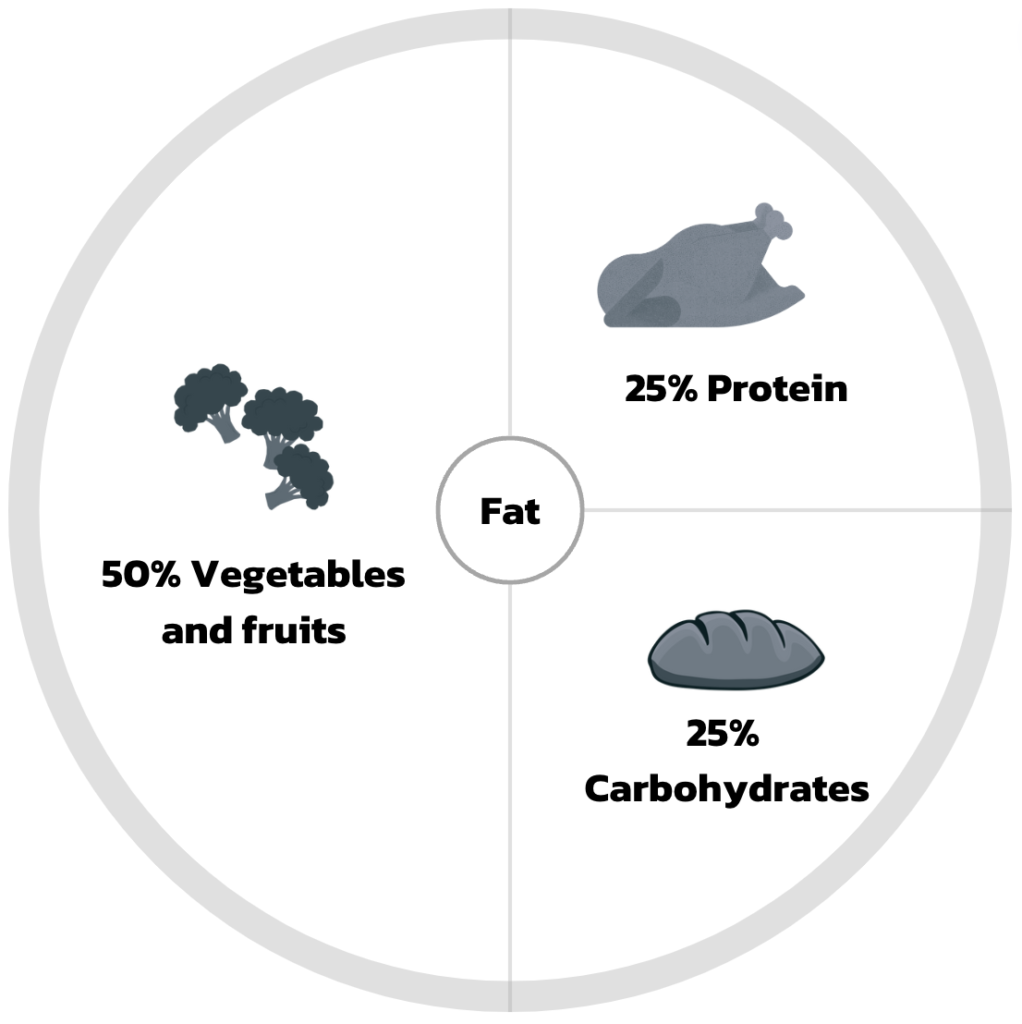The first question I inevitably get when chatting with clients, or at randomers at a bar when I tell them what I do is…
‘What do I eat then?’
Whilst it means well, it opens up a can of worms and the so-called client/stranger clinging to every word that I’m about to say.
As if I have the magic pill that will transform the way they eat then and there.
But let’s be honest, we all know how to eat and what to eat. At least I hope we do, and if not – I’ll answer it here and now.
To get lean, strong, and fit the simplest way is by adopting the following template for all the meals you consume.
- 50% of your plate should be vegetables (or fruit)
- 25% of your plate protein
- 25% of your plate carbs
- About a tablespoon of fat
You might have seen something like this online, on social media, or from Harvard School of Public Health, who created a healthy eating plate extremely similar to this.

What I’ve found, and don’t be OCD about the percentages, but most of my clients get pretty full from the least amount of calories with a plate like the above. It’s hard to overeat in this situation.
In case you’re wondering what the heck a protein, carb or fat is…
Protein
Salmon, chicken, turkey, mackerel, beef, tofu, tempeh, cottage cheese, greek yoghurt.
Carbs
Whole grains, brown or white rice, quinoa, beans, lentils, white or sweet potatoes.
Fats
Extra virgin olive oil, fish oil, avocados, almonds, cashews, walnuts, pure olive oil, egg yolks.
Vegetables
Non-starchy vegetables like bell peppers, onions, lettuce, bok choi, broccoli, spinach, rocket, and sprouts.
Fruits
Apples, oranges, pears, blueberries, blackberries, raspberries, strawberries, lemons, peaches, pineapple and mango
These don’t have to be plate-based either, but in the form of a stew now the winter is well and truly here, a casserole or a sandwich. Just use this as a guideline for how to think when you’re making a meal and building a balanced plate.
Going a step beyond that here are 3 ways to build better eating skills.
Now you have the meals sorted, I want you to do something for me.
During meals:
Listen to your body and notice when you’re getting full.
Between meals:
Listen to your body and distinguish your hunger between cravings, boredom, tiredness, emotions, and thoughts
And then…
As a guideline eat every 4-6 hours with the meal template above, without snacking in between.
Because weight loss simply comes down to two main factors:
- Having the guidelines (meal plan template) and skills to eat the right amount of foods at meals
- Having the guides and skills to not snack in between when stressed, tired, emotional, bored and so on.
Once you master those 3 areas, and I’ll delve into each one over the next couple of weeks you can unshackle yourself from the habits and health you have right now and build a stronger, leaner body for the future that meets your goals without the need to restrict or banish foods from your diet.